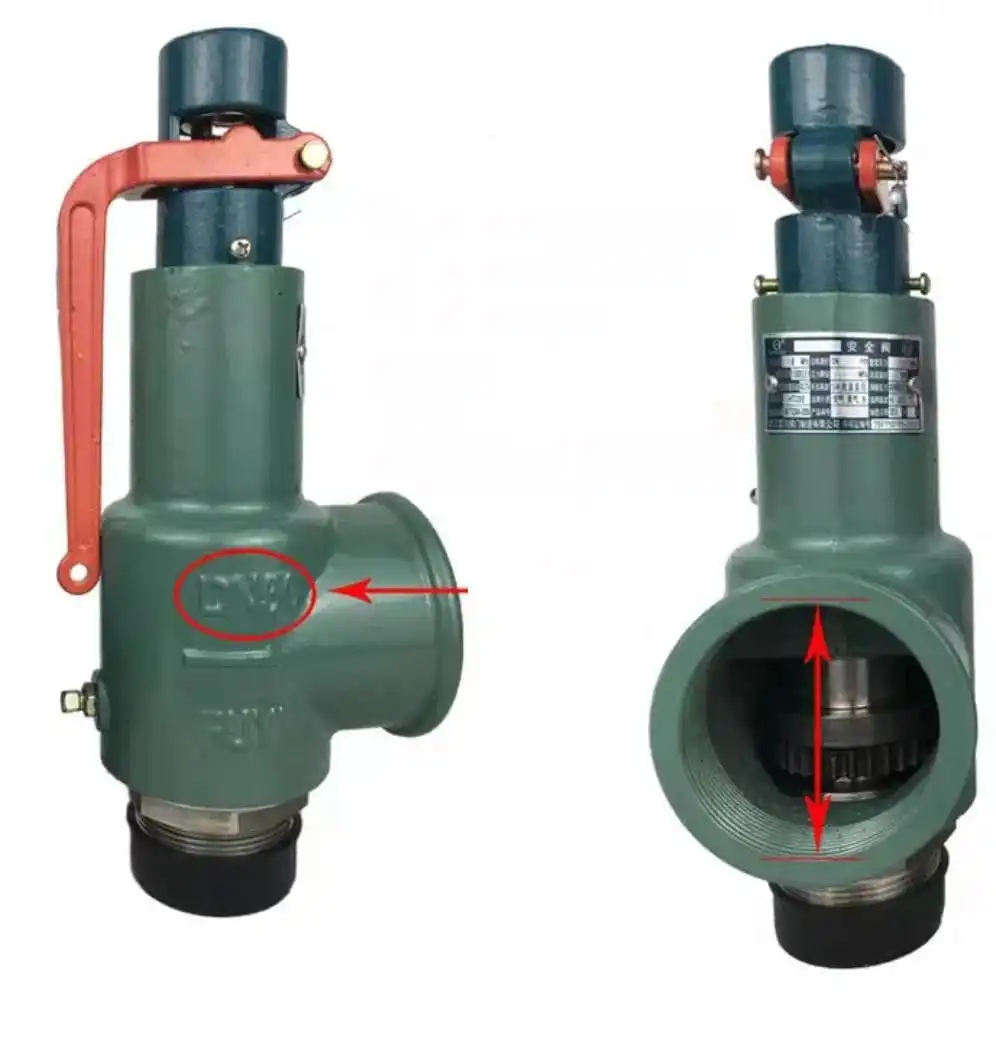The safety valve must be accompanied by a product quality certificate and a solid metal nameplate should be installed on the product.
Opening pressure of safety valve
The set pressure of the safety valve for a fixed pressure vessel is generally not greater than the design pressure of the pressure vessel. If the maximum allowable working pressure is marked on the design drawing or nameplate, the maximum allowable working pressure may also be used to determine the opening pressure of the safety valve.
The opening pressure of the safety valve of the mobile pressure vessel shall be 1.05~1.10 times the design pressure of the tank, the rated discharge pressure of the safety valve shall not be higher than 1.20 times the design pressure of the tank, and the back pressure shall not be less than 0.90 times the set pressure.
Safety valve installation requirements
01
The safety valve should be installed vertically in the gas phase space above the liquid level of the pressure vessel, or on the pipeline connected to the gas phase space of the pressure vessel.
02
The cross-sectional area of the connecting pipe between the pressure vessel and the safety valve and the through hole of the pipe fitting shall not be less than the inlet cross-sectional area of the safety valve, and the connecting pipe shall be as short and straight as possible.
03
When two or more safety valves are installed on one connection port of a pressure vessel, the cross-sectional area of the inlet of the connection port should be at least equal to the sum of the inlet cross-sectional areas of these safety valves.
04
It is generally not appropriate to install a globe valve between the safety valve and the pressure vessel. In order to realize the online verification of the safety valve, a rupture disc device can be installed between the safety valve and the pressure vessel. For pressure vessels containing extreme, high, and moderately hazardous media, explosive media, corrosive, viscous, or valuable media, in order to facilitate the cleaning and replacement of safety valves, a globe valve can be installed between the safety valve (rupture disc device) and the pressure vessel only after the approval of the person from user unit, who is in charge of the safety technology of the pressure vessel, and the establishment of reliable precautions. During normal operation of the pressure vessel, the globe valve must be fully opened (with a lead seal or locked), and the structure and diameter of the globe valve shall not hinder the safety relief of the safety valve.
Calibration cycle of safety valve
The safety valve shall generally be calibrated at least once a year. For the spring-loaded safety valve, when the conditions specified in the relevant regulations are met, the verification cycle can be extended appropriately after approval by the technical person in charge of the user. For any safety valve with an extended calibration cycle, the user unit shall notify the certification authority in writing of the postponed verification.

